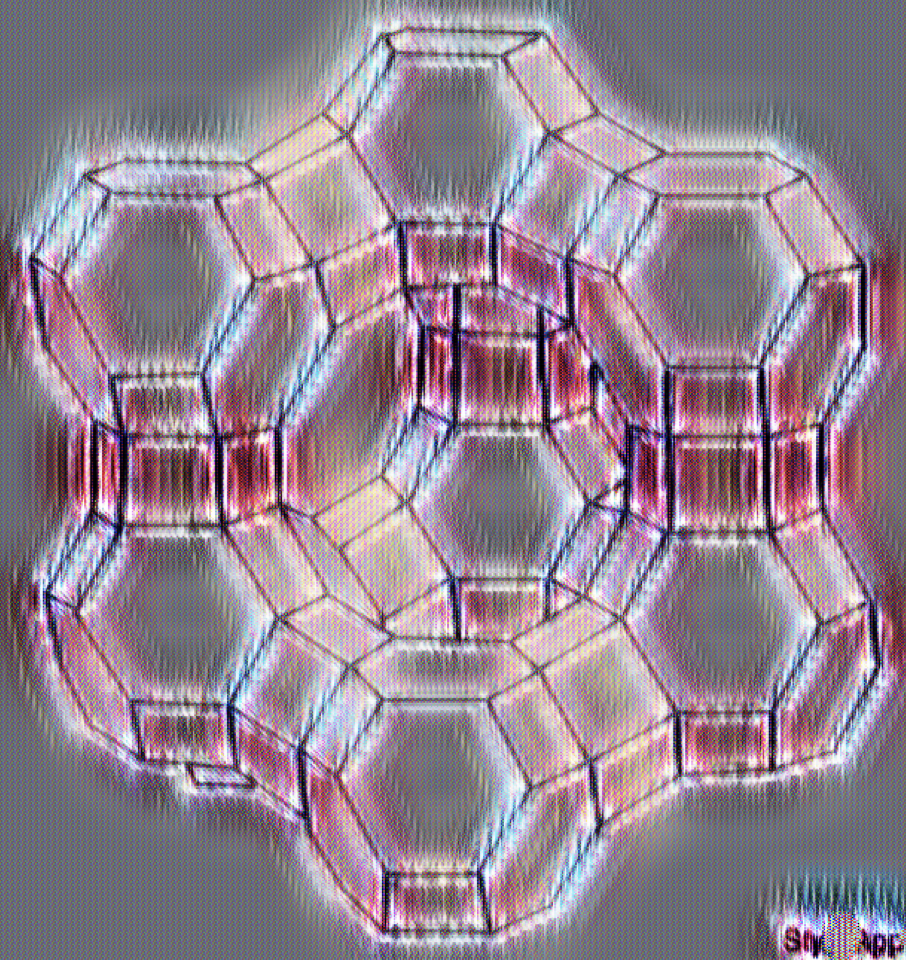Materials Hipster #5: Martijn Zwijnenburg
tags: [materials_hipster machine_learning porous_materials Martijn is an engineer masquerading as a reader in the UCL chemistry department UCL chemistry. His group looks at modelling excited states in new materials, particularly polymers and porous systems. Martijn started his career in Delft before moving to the lost lamented Davy Faraday Research Laboratory of the Royal Institution. After several year in exile in beautiful Catalunya Martijn returned to London and his current position at UCL. For more on Martijn and his group check out https://www.zwijnenburg-group.org/.
What’s your favourite all time material?
I would probably not go so much for a material as for a materials class. I really like these covalent organic frameworks (COFs) that we have been working on recently. I think that they combine a lot of strands of research that I have been doing over the years. They’re (at least semi-)crystalline, let’s say ordered structures. They’re porous, like the zeolites that I worked on so much in the past. But they also have interesting electronic properties. If you look at zeolites, they are electronically pretty boring. I have also done quite a lot of work on polymers, and I see COFs as a nice combination of these two worlds.

What material is super-hot right now?
I think there’s lots of interesting things in polymers now actually. People were maybe a little bit down on polymers when OPV kind of failed to develop, but there are lots of other things that people have started to use them for, like thermoelectrics and photocatalysts. Also, OPV will come back again! (Sidenote, since Martijn’s interview there was a paper in Science reporting super exciting new OPV cells with very over 17% efficiency - Organic and solution-processed tandem solar cells with 17.3% efficiency - talk about being finger on the pulse!)
Any tips for the next big thing?
Co-polymers are great. There’s an enormous unexplored space there. If you just take 600 polymers, there’s something like 400,000 co-polymers, 5,000,000 ternary co-polymers. So if they’re not hot now, they certainly will be, just because there’s so much interesting stuff still to discover there. Compared to inorganic materials, these systems are basically trivially tunable by chemistry.
Is AI going to change science?
It depends on what you mean by AI. I would say that if we are talking about machine learning methods, which are effectively doing advanced statistics, that these are really starting to have an impact in chemistry. Based on our own work in this area, which hopefully will come out soon, I think coming up with a good representation of the data is often more difficult and important than the machine learning algorithm in isolation. If you are talking about the kind of fully automated AI takeover of science, I would say that is something that is a lot less clear!
If you could only read one journal which one would it be?
I would say its going to be either Nature Chemistry or Nature Materials. Both of them give a great overview of the field. Also the quality, not only in terms of science, but they are well written and nicely illustrated. I guess if I were to leave science, these are the kind of journals that I would still read.
Tell me a criminally under-rated journal
When I was postdoc, in the early days, I used to love reading old copies of Philosophical Magazine. There was lots of great, important solid state work published there. Nowadays, it still does publish solid-state chemistry, but because the impact factor is low, the quality of the papers there is not great. That makes me a bit sad, you have this journal where I think Bragg and Kelvin were editors and which published the first report of the discovery of the electron, as well as a paper by Michelson & Morley on their famous experiment, and now it’s output is much more mediocre. I guess I’m quite the melancholic.
PRL or JACS?
JACS. But if you would have asked me that 10 years ago, I would have said PRL. Partly this is because I have moved in terms of my research, but also partly because PRL has changed what they publish.
What’s the best crafted paper you’ve read recently?
I’ve got a bit of a thing about band gaps, and people misusing the term. There have been a few nice papers addressing this. One of them is by Evert Jan Baerends and co-workers and is about gaps in DFT and what the gap should be. They point out that the so-called band gap problem of DFT is not really a problem at all, because DFT is never meant to give you a band gap, it is meant to give you if any thing an optical excitation. There’s also a very nice perspective article in Materials Horizons, by Jean-Luc Bredas called Mind The Gap, it sets out clearly the different types of gap and what is important in a given situation.
Some of the old papers from people like Mott are also fantastic. They are very clear, and easy to follow. I guess because they didn’t have the computing power back then, the models tend to use simple algebra that you can easily follow and yet they capture most of the important physics. There are also papers by Michael Kasha on excitons in aggregates, that are so beautiful and easy to follow.
Who’s papers make you read a bit deeper?
Besides people like Mott and Kasha, there is Xavier Blase who has written a number of really nice papers about the GW and Bethe-Salpter methods. He writes about GW and Bethe-Salpeter in a way that I can follow; I often find with other GW papers I get lost in an alphabet soup of approximations. Some top picks:
- Excited states properties of organic molecules: from density functional theory to the GW and Bethe–Salpeter Green’s function formalisms
- The Bethe–Salpeter equation in chemistry: relations with TD-DFT, applications and challenges
What’s your favourite conference?
I really like CECAM workshops. I usually try to go to at least one a year (although having recently become a a father that was not possible last year). They’re really nice, because they’re small, they’re intimate and you really get to know people. Also, compared to something like the Gordon conferences, which I also like, the CECAM workshops are much more open, you don’t necessarily have to be in the in crowd to get a talk.
Best conference catering you’ve ever experienced?
I think I’m going to go with a conference location, rather than a specific conference. I have had the pleasure of going to two conferences in San Sebastian. Both of them involved a conference meal going to one of the amazing local gastronomic clubs. Here people cook together and make the most amazing meals. Having been lucky enough to live in Spain for 3 years as a postdoc, I love Spanish food, but the food in San Sebastian is at another level.
Worst conference catering?
Always at the ACS its awful. There’s no catering provided and then you end up with 10 or 15 thousand people trying to go for lunch at the same time and there are not enough restaurants so you queue for ages and invariably miss a lot of talks.

What do you do outside materials science?
I’d say my biggest hobby is running. I have started to do it in recent years. I try to do parkrun as often as possible. I like that when you are running it allows you to clear your mind. Interestingly, I notice that a lot of scientists tend to be runners. There’s a nice feeling that if you work hard at it you improve and see tangible results, which is not always a guarantee in science!!
Whiskey or gin?
Gin. I never really drink whiskey. But gin and tonic - that’s nice. Also there’s jenever, from the Netherlands. Historically they are the same drink and jonge jenever (young jenever) is still very similar. We used to drink it as a mixer with bitter lemon as undergraduates in Delft. There hasn’t really been the explosion of craft jenever in the way that there has with gin. (Sidenote: Maybe the time is right to start making some small batch jenever)